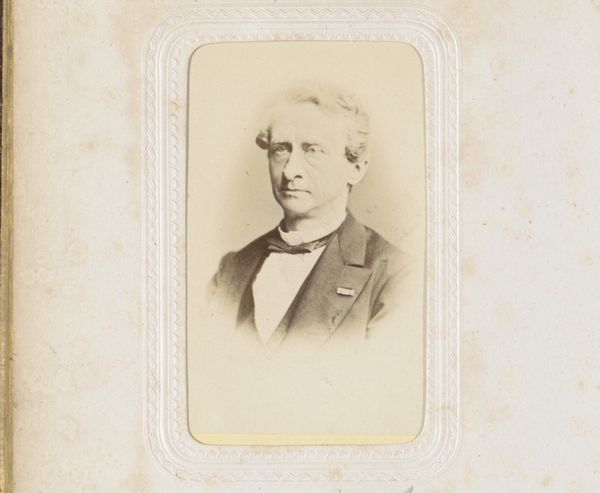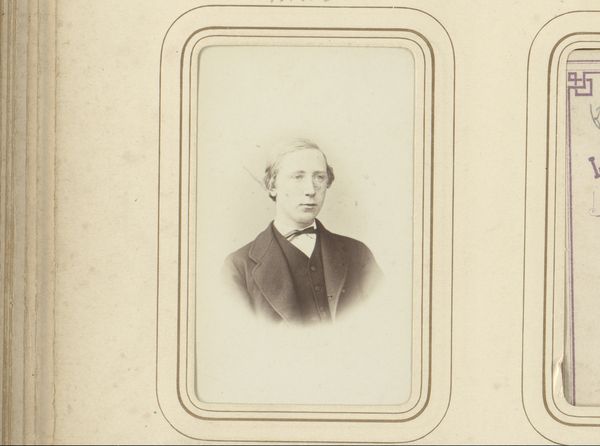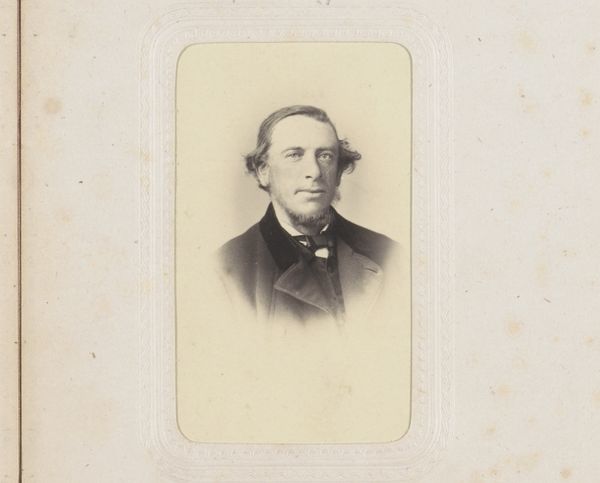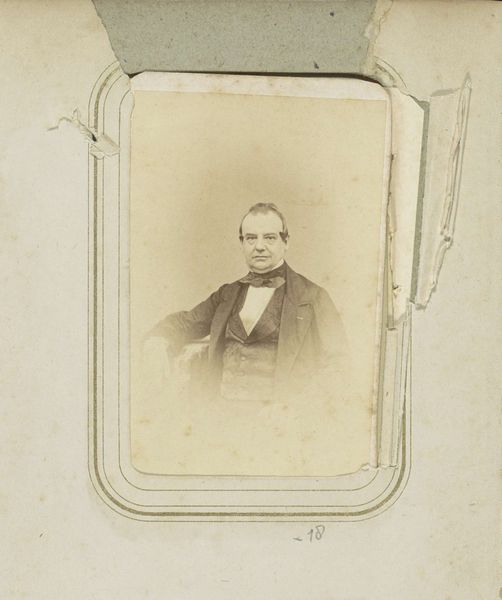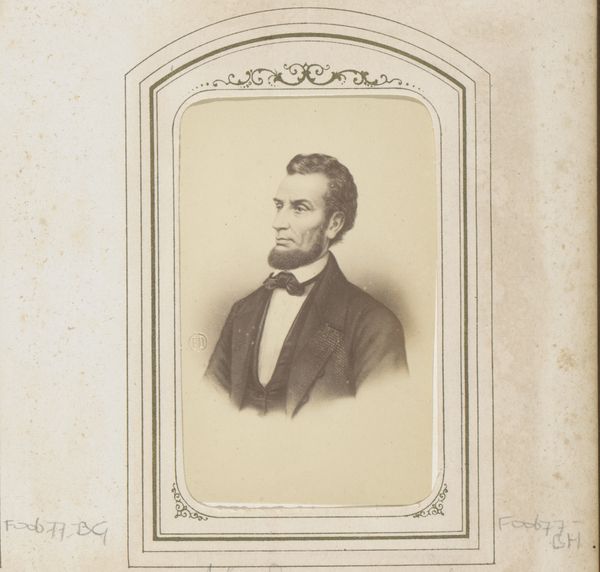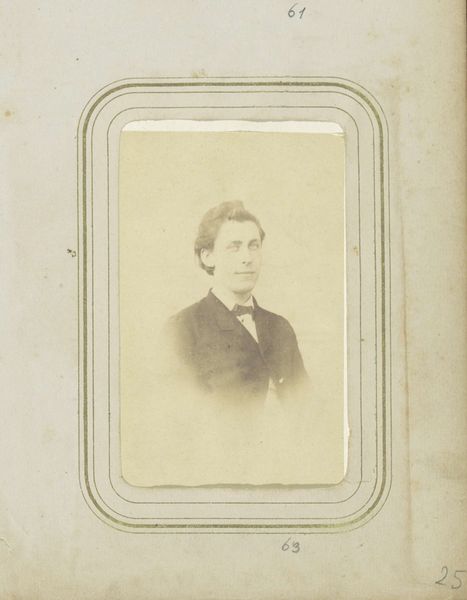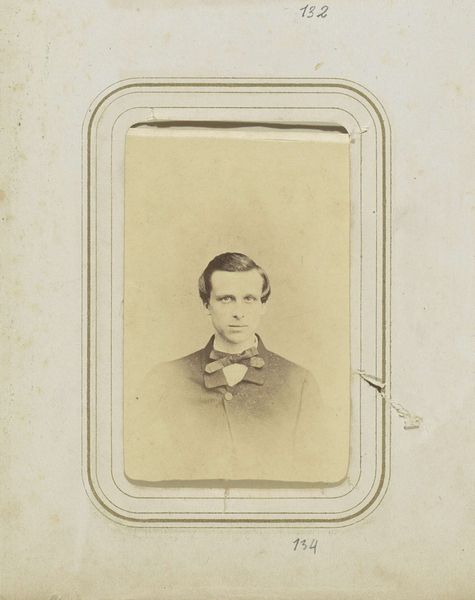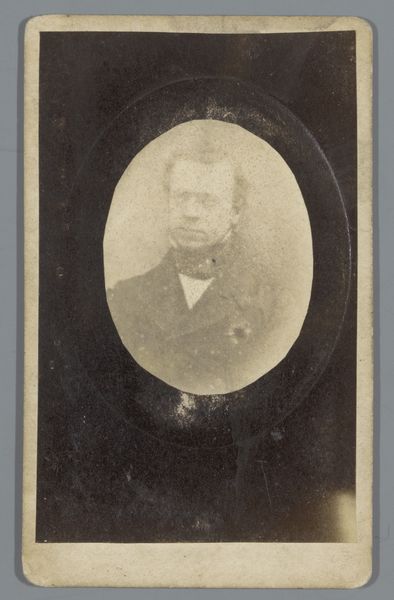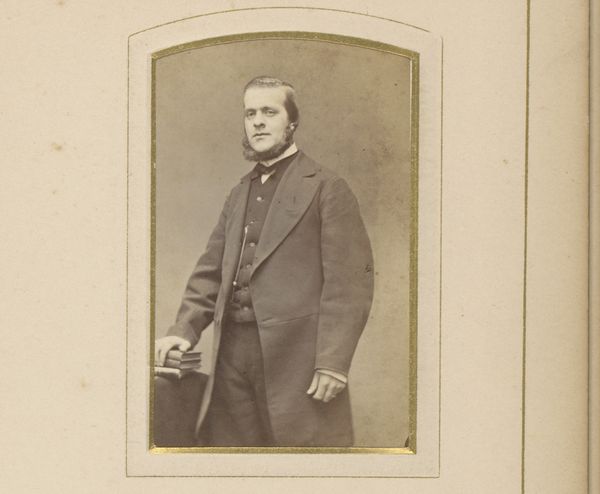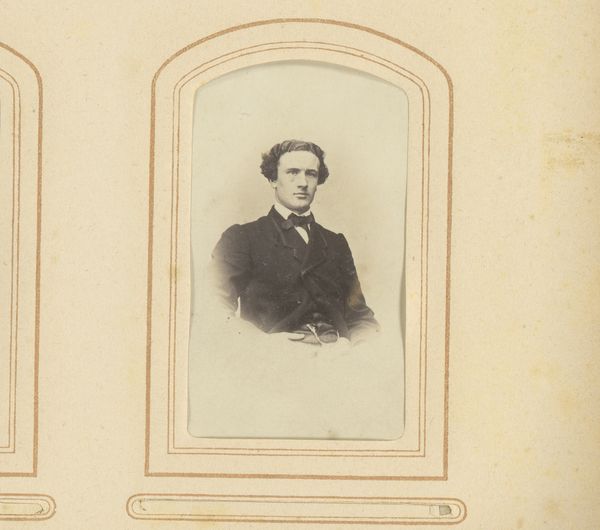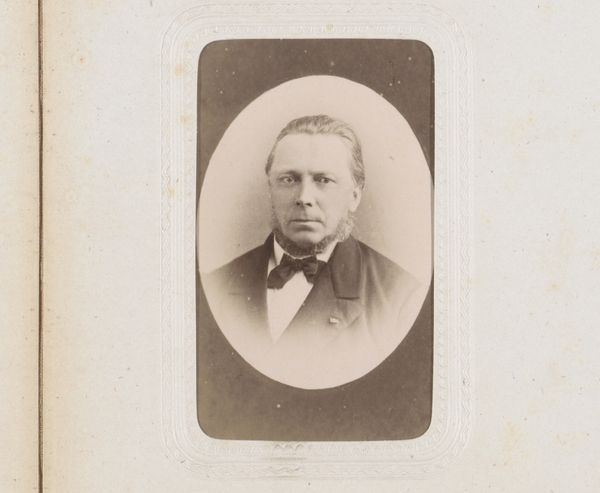
photography
#
portrait
#
photography
#
realism
Dimensions: height 82 mm, width 50 mm
Copyright: Rijks Museum: Open Domain
Jacobus van Koningsveld created this photograph, *Portret van een man, aangeduid als Geertsema*, using the wet collodion process, a popular technique in the mid-19th century. It involves coating a glass plate with light-sensitive chemicals, exposing it in a camera, and developing it immediately. The resulting image has a distinctive, ethereal quality, with soft contrasts and fine details. The process required both technical skill and artistic judgment. This mode of production, while on its way to becoming industrialized, still necessitated a high degree of artisanal knowledge. Consider the labor involved: preparing the chemicals, coating the plate, setting up the shot, developing the image. These steps highlight photography as both a scientific and a craft-based practice. This contrasts with the kind of seamless, automated image-making we know today. By focusing on the materials and making of this photograph, we can appreciate its historical context and the blend of art, science, and labor that shaped its creation. This helps us to move beyond simple aesthetics, and understand the broader cultural significance of early photography.
Comments
No comments
Be the first to comment and join the conversation on the ultimate creative platform.
